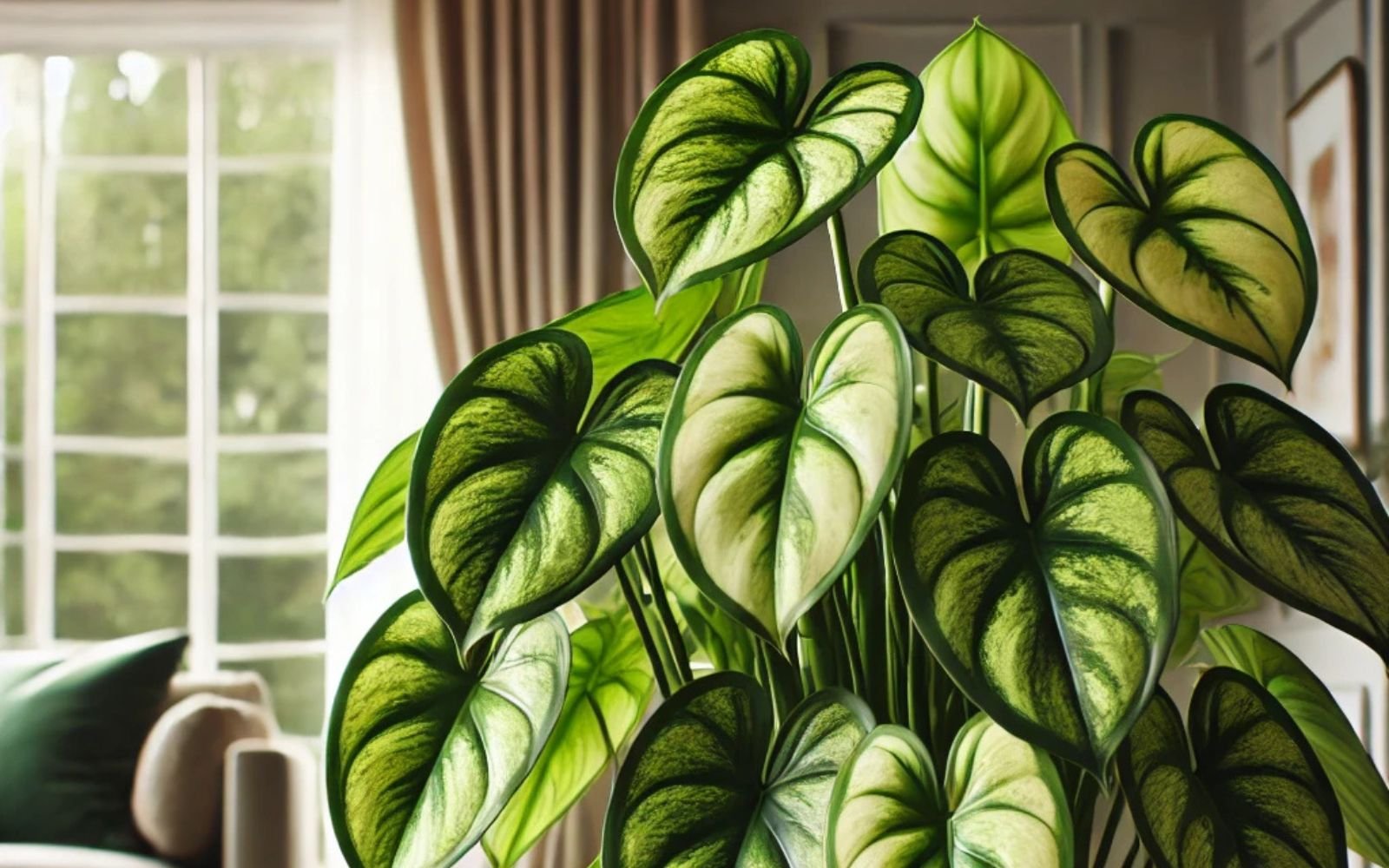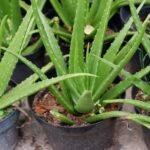Philodendron Brasil is a colorful type of heart-leaf philodendron. It’s a popular vining houseplant. It has vibrant lime-green patches on its green leaves, making it stand out. This tropical plant thrives in bright, indirect light and well-draining soil. It enjoys moderate humidity. This blog will explore the types and Philodendron Brasil care. It will also cover how to propagate and maintain this plant. Let’s dive in and discover the beauty of these adaptable and air-purifying plants!
Table of Contents
ToggleTypes of Philodendron Brasil Plant
This Plant come in many different types, each with its own unique look and care needs. It comes in small, trailing, and vivid colors. Let’s explore some of the most popular types!
- Heartleaf Philodendron: It has small, heart-shaped green leaves and vines. It’s perfect for hanging baskets. It grows well in bright to medium indirect light and only needs watering when the soil is dry. It’s great for beginners!
- Imperial Green Philodendron: It has large, smooth, dark green leaves. They can grow up to 18 inches long. This variety stays compact and doesn’t spread out. It thrives in bright, indirect light and is perfect for indoor spaces.
- Philodendron Micans: Its dark green, velvety leaves and trailing vines make it a lush houseplant. It grows well in medium to bright indirect light and needs watering when the soil is almost dry.
- Philodendron ‘Prince of Orange’: It has golden-orange leaves. As the leaves mature, they change from yellow to orange and then to bright green. It grows 3 feet tall and wide. It needs bright, indirect light to keep its colors vibrant.
- Philodendron Birkin: This is a trendy plant with deep green leaves and white pinstripes. It is a slow grower that requires bright, indirect light to maintain its look.
- Philodendron Erubescens (Blushing Philodendron): This climbing plant has large emerald-green leaves. The backs have red or pink undertones. It thrives in bright, indirect light and is a hardy, versatile plant.
Philodendron Brasil Care
Caring for your this plant is simple once you know what it needs. This plant enjoys bright, indirect light, well-draining soil, and a balanced watering routine. It thrives in warm, humid conditions. It can enjoy occasional pruning and fertilizing. Keep reading to learn how to give your plant the best care!
Light
It thrives in bright, indirect light, which enhances its variegation. Low light for too long can make the plant leggy and dull its color. Avoid direct sunlight, as it can scorch the leaves.
Soil
This plant does well in standard indoor potting mix. But, it will thrive in a slightly acidic mix for philodendrons and other aroids (the Araceae family). You can buy a ready-made philodendron potting mix or make your own by combining:
- Equal parts worm castings, perlite, peat moss (or coco coir), and orchid bark.
The mix should aerate and drain well. But, it must hold some moisture for healthy growth.
Water
Allow the top 2 to 3 inches of soil to dry out between waterings. Once dry, water thoroughly until it drains from the holes. Do not let the pot sit in standing water. Overwatering or soggy soil can lead to root rot, so it’s important to strike a balance.
Temperature and Humidity
Philodendron Brasil is native to South America’s tropical rainforests. So, it thrives in warm, humid environments. It adapts to average household temperatures and humidity. But, you can boost growth by increasing humidity. Keep the temperature between 65 and 85 degrees Fahrenheit. Avoid temperatures below 55 degrees.
To Boost Humidity:
- Use a humidifier.
- Place the pot on a pebble tray filled with water.
- Group it with other humidity-loving plants.
Fertilizer
Feed your plant monthly in spring and summer, its active growing season. Use a balanced liquid houseplant fertilizer. Dilute the fertilizer to half strength to avoid over-fertilizing. Do not fertilize in fall and winter. The plant will be dormant and won’t need extra nutrients.
Pruning
Regular pruning helps maintain the plant’s size and encourages bushier growth. Remove any dead or yellowing leaves, and trim leggy stems to keep the plant looking full and healthy. Pruning can also help shape the plant to your liking. Use clean, sharp scissors or pruning shears to prevent damage or the spread of disease.
Potting And Repotting
Philodendrons are fast growers and need repotting every 1–2 years to stay healthy. Like most of their kind, they dislike being root-bound, so it’s essential to check their growth. Repotting is best in spring or summer, when the plant is growing. This helps reduce stress.
Potting: Use a pot with enough drainage holes to avoid waterlogging, which can harm the plant. Use a fresh, nutrient-rich, well-draining potting mix to start your Philodendron. Ensure the pot size is appropriate—one that gives the roots some space but isn’t excessively large.
Repotting: Look for signs like roots poking out of drainage holes to know when it’s time to repot. When repotting, gently loosen the root ball. Trim any damaged or unhealthy roots. Move the plant to a slightly larger pot (one size up). Fill in with fresh potting mix. This will secure the plant. Regular repotting helps growth and keeps the plant healthy and vibrant.
How to Propagate Philodendron
To grow more this tropical plants, try propagation! It’s simple and enjoyable. Just take a cutting from your plant, and you can grow a new one. Here’s a quick guide to propagating your plant.
- Pick the Right Stem: Start by selecting a healthy stem that is about 3 to 6 inches long. Look for one that’s free from pests and diseases, with no signs of stress. Cut the stem just above a leaf node. This helps the main plant grow more shoots. It also gives your cutting a good starting point for roots.
- Prep Your Cutting: Remove all the leaves from the lower part of the stem, leaving only the top three or four. This prevents the leaves from sitting in water or soil, which can cause rot.
- Root in Water or Soil: Place the bare part of the stem into a jar of water or moist potting soil. If you’re using soil, press it gently around the stem for support. Make sure no leaves are submerged or buried—adjust the cutting or remove extra leaves if needed. Put the container near a bright window with indirect sunlight. Keep the water topped up or the soil moist.
- Create the Right Environment: Philodendron cuttings love warmth and humidity! Keep them at 75°F. To add humidity, cover the cutting with a zip-top bag. Prop it up with chopsticks or something similar. If using soil, mix one part peat potting mix with one part perlite. This will improve drainage and retain moisture for root growth.
- Watch for Roots and Be Patient: Roots will start forming in 2–3 weeks, followed by new leaves. If rooting in water, you’ll see the roots grow clearly. For soil, gently tug the stem after a couple of weeks—if you feel resistance, roots are forming!
- Pot Your Cutting: Once roots are an inch long, transfer the cutting to a small 3–4 inch pot of fresh potting soil. Water it well to help it adjust to its new home.
- Multiply Your Success with Multiple Cuttings: If your plant is big enough, take 3-5 cuttings. Root them all together in one container. This way, when you pot them, you’ll have a lush, full plant. You won’t have to wait for a cutting to branch out.
Philodendron Brasil Plant Benefits
These plants are adaptable. They can thrive in various environments. So, they are ideal for any room in your home. They purify the air. They also reduce stress and improve well-being. Here’s why philodendrons are a great addition to your space!
1. Super Easy to Care
If you want a low-maintenance plant, choose the Philodendron! It’s a great choice for beginners and busy people. It thrives in offices and living rooms. Unlike some other houseplants, the Philodendron is simple. Just give it light, water it regularly, and occasionally mist the leaves. It’s as easy as that to keep it happy and healthy!
2. Highly Adaptable
They can thrive in many environments. They’re happy at room temperature. They can tolerate low light. But, they prefer bright, indirect light for optimal growth. They are perfect for any room in the house. This includes an office, living room, study, or even a bathroom or kitchen. They also love humid environments, so they’ll do well in spaces where moisture levels are higher.
3. Air-Purifying Superstar
They also purify the air in your home. NASA studies show these plants are great air purifiers. They remove toxins and create a healthier atmosphere. So, while you’re enjoying your new plant, you’re also breathing cleaner, fresher air.
4. Stress-Relieving Benefits
Many studies show that plants can reduce stress and improve well-being. Being in nature, indoors or out, reduces anxiety. It boosts mood and health. If you live in a city or lack a garden, houseplants like the Philodendron can bring calm to your home. They’re not just decorative—they’re beneficial to your mental and physical health too.
Common Problems
Although Philodendron Brasil is simple to care for, it can face a few common issues. Curling leaves, brown tips, or fading variegation may signal a problem. Your plant might need extra attention. Here’s how to address these problems and keep your plant healthy and thriving!
1. Curling Leaves: If your plant leaves are curling, it needs water. Water it when the top couple of inches of soil feel dry. Don’t let it sit in completely dry soil for too long. If you forget to water for a long time, the roots may dry out. They won’t absorb water even if you try to hydrate the plant. In this case, you’ll need to propagate the plant through stem cuttings to regrow the roots and save it.
2. Browning Tips: Browning tips on the leaves can be caused by several factors. Often, it’s a result of dry conditions, such as air vents blowing directly on the plant. To fix this, move the plant away from vents. Increase humidity with a pebble tray or humidifier. Too much direct sunlight can also cause the tips to brown, so ensure it’s placed in a spot with bright, indirect light. Lastly, browning can mean underwatering. So, check your watering schedule. Ensure the plant isn’t drying out too much between waterings.
3. Loss of Variegation: If your plant variegation fades, it needs more light. In low-light conditions, the plant may revert to its standard heartleaf variety. To restore the variegation, move the plant to a brighter spot. Then, trim off the non-variegated sections. This will encourage new growth with the white and green pattern.
Common Pests
Philodendron Brasil is not prone to pests or diseases. But, like any houseplant, it can attract pests. These include mealybugs, scale, spider mites, and fungus gnats. To prevent infestations, check your plant for pests regularly. Act quickly at the first sign of trouble. Being proactive with treatment will help keep your plant healthy and pest-free.
Conclusion
In conclusion, the Philodendron Brasil is a lovely, low-maintenance plant. It adds a pop of color to any space. Its bright lime-green variegation and adaptability make it perfect for busy plant owners and beginners. With the right light, water, and humidity, you can enjoy a thriving, air-purifying plant. It will reduce your stress. This plant is a great home addition. Whether you’re propagating it, keeping it healthy, or just admiring it. Just remember to keep it out of reach of pets and children to avoid any health risks.
Faqs :
- Does Philodendron Brasil Have Flowers?
Philodendron is primarily grown for its brilliant foliage and although it may flower, the blooms are rather insignificant and rare when grown indoors. However, if you notice a green and white spathe growing from your plant, congratulations—your Brasil has bloomed.
- Does Philodendron Brasil grow indoors easily?
Absolutely! It’s a gorgeous plant as long as it’s given plenty of natural light and you pay attention to humidity levels.
- Do philodendrons like to be root-bound?
Although they tolerate being root-bound better than many plants, it isn’t their preference. Keep your philodendron healthy by repotting it regularly as the plant grows.







